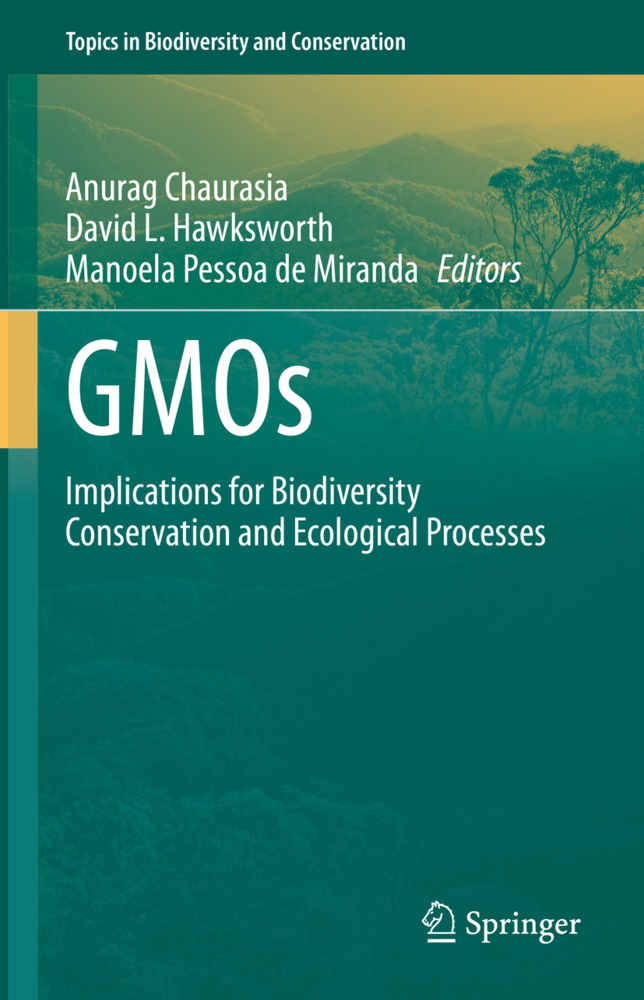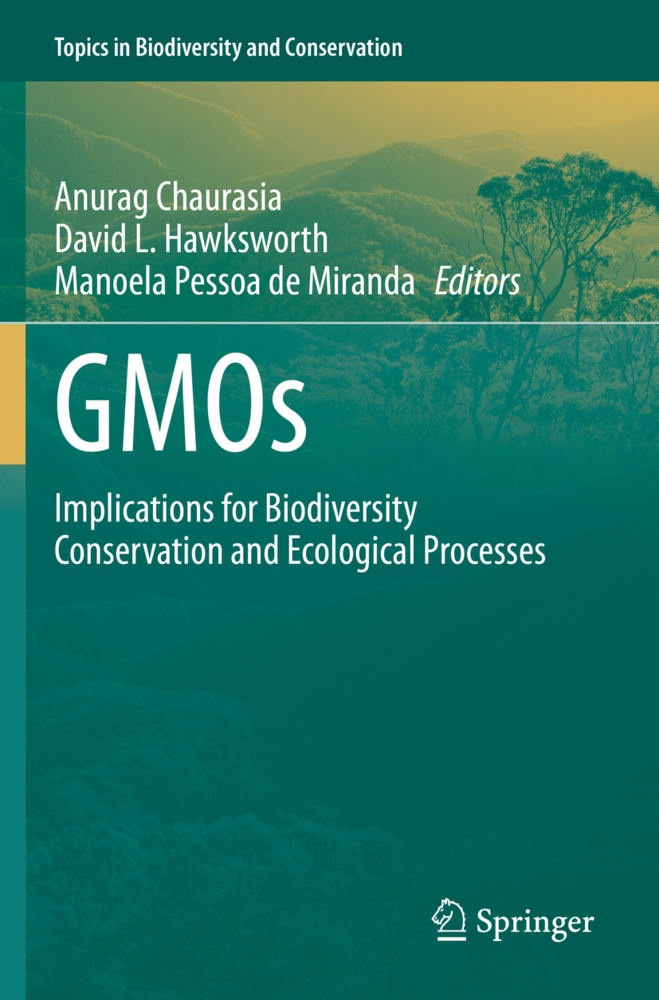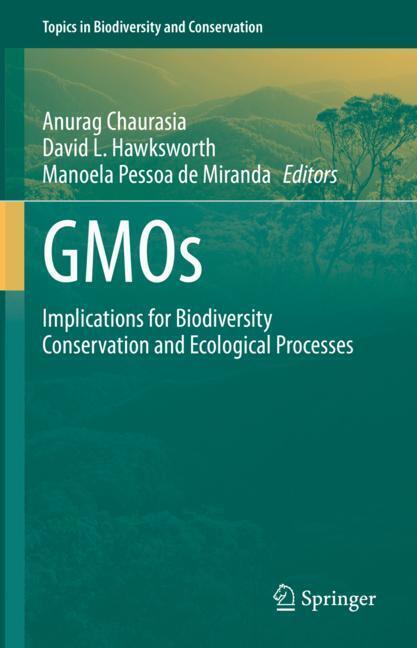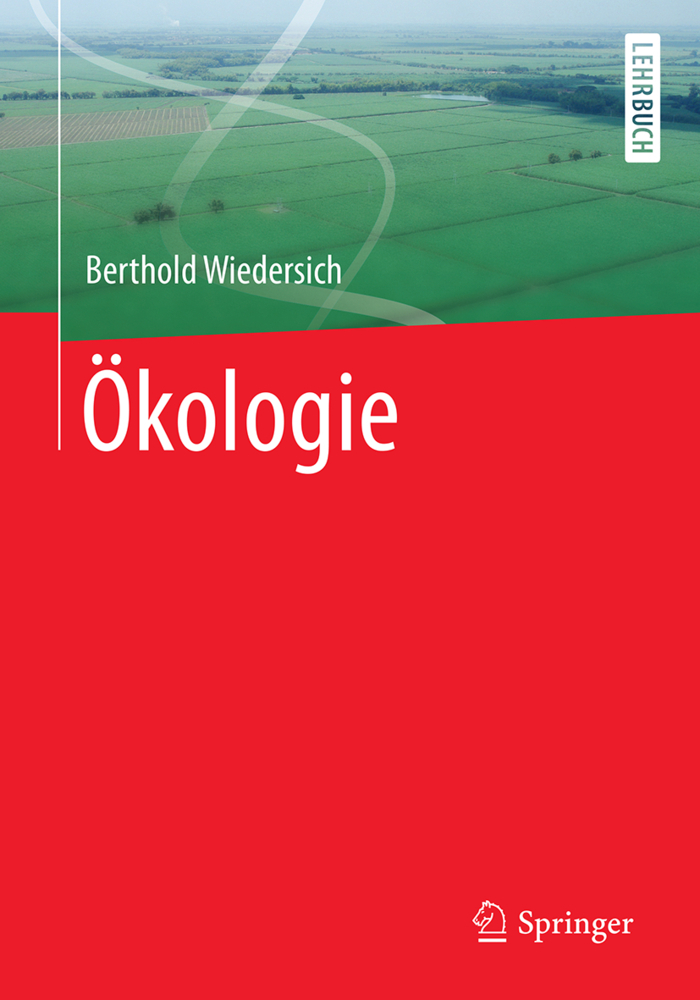GMOs
GMOs
This book covers a broad spectrum of topics related to GMOs and allied new gene-based technologies, biodiversity, and ecosystem processes, bringing together the contributions of researchers and regulators from around the world. The aim is to offer a clear view of the benefits and effects of genetically modified crops, insects, and other animals on the soil microbiome and ecological processes. Contributors examine issues related to the development of risk assessment procedures and regulations designed to maximize benefits while minimizing risks.
Beyond the scientific challenges of GMOs, the book explores the broad and contentious terrain of ethical considerations. The contributors discuss such questions as the unintended, possibly unforeseen, consequences of releasing GMOs into ecosystems, and the likelihood that the full effects of GMOs could take years, even decades, of close monitoring to become evident. The importance of developing a precautionary approach is stressed.
The final chapter describes the critical issues of governance and regulation of new and emerging gene-based technologies, as nations grapple with the consequences of adopting the Cartagena Protocol on Biosafety (CPB). The volume includes an extensive Annex which outlines legal perspectives on the state of GMO governance around the world, with more than 20 examples from nations in Africa, South and Central America, Asia, Australasia, and Europe.
Introduction
Chapter 1. GMOs, Biodiversity and Ecosystem Processes Part I: GM CROPS AND THEIR IMPACTSChapter 2. Impact of GM crops on farmland biodiversity
Chapter 3. GM crops: Resistance development and impact on biodiversity
Chapter 4. Impact of Genetically Modified Crops on the Biodiversity of Arbuscular Mycorrhizal Fungi
Chapter 5. GMOs - Impact on Non-Target Arthropods
Chapter 6. Impacts of Genetically Engineered Crops on the Soil Microbiome, Biological Processes and Ecosystem Services
Chapter 7. Environmental analytical and ecotoxicological aspects of Bt maize in the Pannonian Biogeographical Region of the European Union. Part II: GM INSECTS
Chapter 8. GM Insect biodiversity and ecological interactions
Chapter 9. Invasive Species Control and Resolution of Wildlife Damage Conflicts: a Framework for Chemical and Genetically-based Management Methods
Chapter 10.Risk assessment of transgenic silkworms
Part III: GM VERTEBRATES
Chapter 11. Genetically Engineered Fish: potential impacts on aquaculture, biodiversity, and the environment
Chapter 12. GM Farm Animals: Potential Impact on Biodiversity Including Ethical Concerns
Chapter 13. GM Animals: Biodiversity and Bioethical Concerns and Analysis
Part IV: RISK ASSESSMENT
Chapter 14. Hypothesis-led ecological risk assessment of GM crops to support decision-making about product use
Chapter 15. Risk assessment of insect-resistant genetically modified crops on non-target arthropods and benefits to associated biodiversity of agro-ecosystems
Chapter 16. Ecological Risk Assessment for soil invertebrate biodiversity and ecosystem services
Part V: GENE DRIVE APPROACHES
Chapter 17. Engineered Gene Drives: Ecological, environmental, and societal concerns
Chapter 18. Engineered Gene Drives and their Value in the Control of Vector Borne Diseases, Weeds, Pests and Invasive Species
Chapter 19. Evaluating Gene Drive Approaches for Public Benefit
Part VI: GOVERNANCE AND REGULATION
Chapter 20. Governance of Emerging Technologies/Applications in the Bio/Life Sciences: Genome Editing and Synthetic Biology.- Part VII: ANNEX A
National legal perspectives. Africa. Chapter 21. Botswana - Genetically modified organisms (GMOs) and Synthetic biology: Their potential applications and the legal perspectives
Chapter 22. Democratic Republic of the Congo - GMOs/synthetic biology rules/regulations and biodiversity: A legal perspective
Chapter 23. Kenya - A Review of Regulation of Genetically Modified Organisms (GMOs) - Case Study of Kenya. Chapter 24. South Africa - Synthetic Biology Regulatory Considerations and Biodiversity: A Legal Perspective for South Africa
Chapter 25. Tunisia - The Use of Modern Biotechnology in Tunisia: Regulatory Framework
Chapter 26. Zimbabwe - The status of Biosafety in Zimbabwe: A legal perspective. Americas
Chapter 27. Argentina - Regulatory Framework for Genetically Modified Organisms (GMOs)
Chapter 28. Colombia - GMOs/innovative biotechnology regulations
Chapter 29. Ecuador - Modern biotechnology in Ecuador: development and legal framework
Chapter 30. Honduras - GMOs/synthetic biology rules/regulations and biodiversity: A legal perspective from Honduras
Chapter 31. Venezuela - GMOs/regulations and biodiversity: A legal perspective in Venezuela
Asia
Chapter 32. India - GMOs/Synthetic Biology rules/regulations and biodiversity: A legal perspective from India
Chapter 33. Malaysia - Genetic modifications and synthetic biology regulations and biodiversity: A legal perspective for Malaysia
Chapter 34. Pakistan - Synthetic Biology: challenges and opportunities from a biodiversity perspective in Pakistan
Chapter 35. Thailand - GMOs and synthetic biology regulations: Thailand perspective.- Australasia
Chapter 36. Australia - Biodiversity Considerations as Part of the Regulation of GMOs, Including Synthetic Organisms
Chapter 37. New Zealand - GMO Rules and Regulations in New Zealand
Europe
Chapter 38. Czech Republic - GMO Regulations and Biodiversity: A Legal Perspective
Chapter 39. Hungary - Hungary's GMO-free policy and its legal background
Chapter 40. Italy - GMOs and synthetic biology rules/regulations and biodiversity: the legal perspective of Italy
Chapter 41. Norway - The Norwegian Gene Technology Act: Protection of Biodiversity
Chapter 42. Slovenia - GMOs and synthetic biology regulations and biodiversity: A Slovenian legal perspective.
Chaurasia, Anurag
Hawksworth, David L.
Pessoa de Miranda, Manoela
| ISBN | 978-3-030-53182-9 |
|---|---|
| Artikelnummer | 9783030531829 |
| Medientyp | Buch |
| Auflage | 1st ed. 2020 |
| Copyrightjahr | 2020 |
| Verlag | Springer, Berlin |
| Umfang | XV, 667 Seiten |
| Abbildungen | XV, 667 p. 33 illus., 20 illus. in color. |
| Sprache | Englisch |







